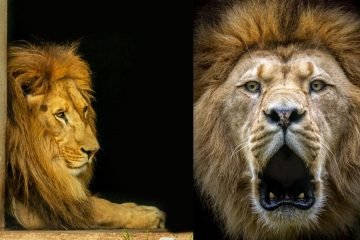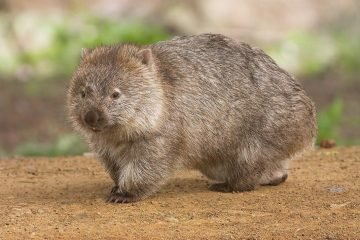Sabre-toothed Tiger: The once-dominant apex predator
The once-dominant apex predators, the Sabretooth Tiger, is one of the most popular prehistoric animals. They dominated the grassland plains and open woodlands. They lived throughout the Americas and Europe in the Pleistocene (from 2.5 million to 10,000 years ago). Their teeth size was up to 8-12 inches long. According to research, despite the size of their teeth, their teeth were fragile, and they never used their teeth while hunting.
They were about the same size as the Modern African Lion, but their build was much stockier than the other cat species. In fact, their teeth were the longest amongst the cat species. They are a distant relative of the modern cat. They weighed around 120-880 pounds, reached a height of 3ft., and a length of 4.5 ft. It had short legs, small ears, and small feet. It had a short tail, and sharp claws powerful enough to rip off the flesh of prey. These limbs helped them become excellent jumpers. Their eyes weren’t forward-facing like modern-day cats, and their shoulders were broader and larger than their hips. They had powerful jaws, and they had a robust neck.
Diet, Habitat, and Behaviour:
Diet: The Sabretooth Tigers diet comprised large herbivores like bison, antelope, horses, camels, deer, mastodons, mammoths, ground sloths, and ungulates. They were apex predators and you would not want to mess with these enormous cats. There are claims that Sabretooth Tigers killed a few humans. However, these claims have not been proven. These apex predators competed with the American Lion and the Dire Wolf for territory and food as their territories always overlapped with these animals.
Habitat: Sabretooth Tiger lived in a wide range of habitats including grasslands, shrubby areas, and pine forests. The Pine Forests have permanent water sources such as floodplains, marshes, swamps, bogs, rivers, lakes and wetlands. Tigers lived in the Andes Mountains of South America, and temperate regions.
Behaviour: There are multiple theories surrounding the animal’s behaviour. Researchers suggest these cats lived in groups because researchers found their remains in great numbers in the La Brea Tar Pits. Archaeologists have found multiple individual fossils close to each other. The mating process of the Sabretooth Tiger is unknown and other aspects like their litter sizes and how long their gestation period was, remain unsolved till this day.
What we know is that the Sabretooth Tigers developed their adult canine teeth until they were three years old. During that three-year period, the Sabretooth Tiger depend on their parents or pride to look after them, either by feeding them or protecting them.
Causes of Extinction:
The Sabretooth Tiger went extinct around 10,000 B.C. The period of their extinction happened around the time when human-made huge strides in hunting technology. Humans hunted the Tigers more for protection and for sport, and for clothing as the bat’s fur would have kept the humans warm in Winter. That could be one factor that led to the Sabretooth Tigers extinction.
Also, precipitation changes caused by glacial periods are believed to have led to changes in the Sabretooth Tiger’s environment. Those changes might have been too much for the Sabretooth Tigers. Another factor that may have caused the Sabretooth Tiger’s population to decline include the lack of food and prey. The changes caused to vegetation led to less prey, which would have meant some Sabretooth Tiger’s would have died of starvation. The Sabretooth Tigers survived previous glacial periods but something about the one that happened around 10,000 B.C. may have been too much for them to handle. There were other animals that did not survive this Glacial period.
Sources:
https://animalstime.com/saber-tooth-tiger-facts-saber-tooth-tiger-habitat-diet/
https://nookipedia.com/wiki/Sabertooth_Tiger
https://www.britannica.com/animal/saber-toothed-cat
https://kidzfeed.com/saber-tooth-tiger-habitat/
https://animals.net/saber-tooth-tiger/
https://sciencing.com/did-tooth-tiger-go-extinct-6113344.html
Author -Neel









